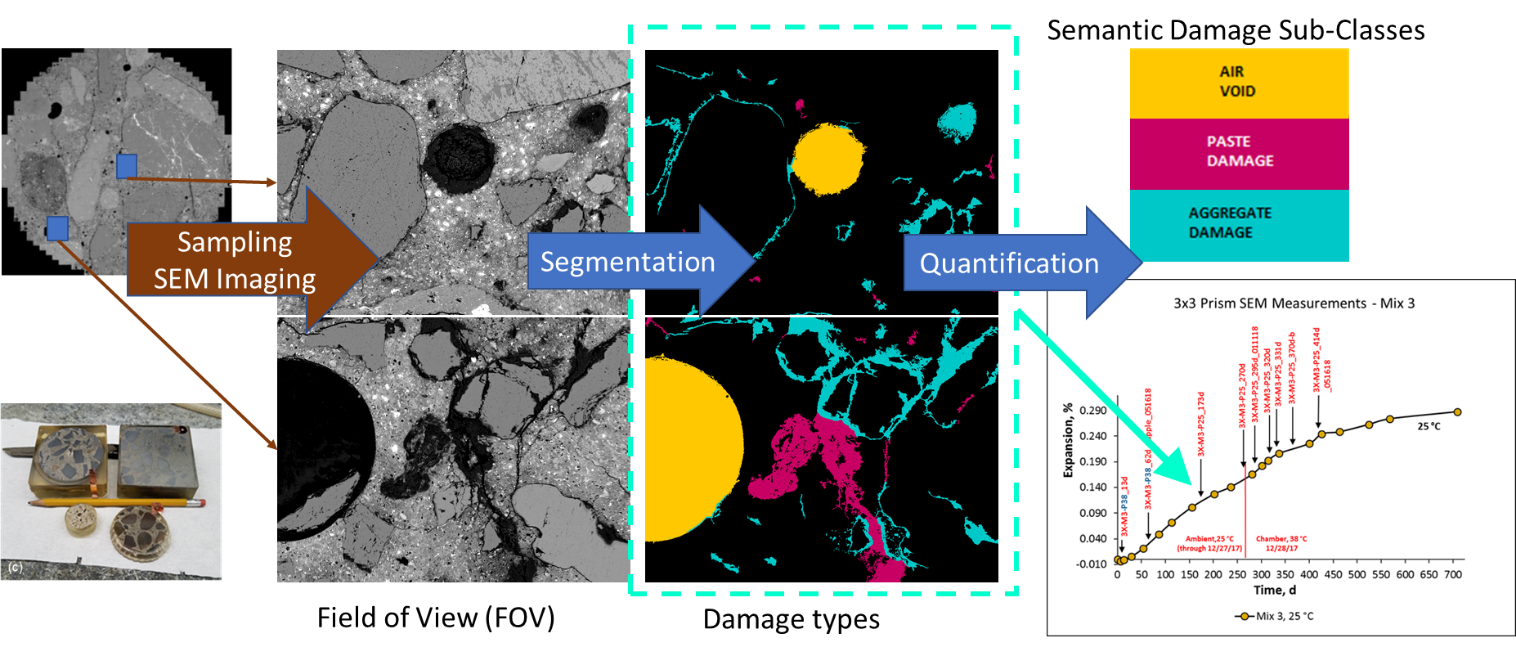Summary
Alkali–silica reaction (ASR), one of the most destructive and costly causes of concrete deterioration worldwide, results from the complex interaction between highly alkaline pore solution of concrete and certain metastable forms of silica found in many reactive types of concrete aggregate. Understanding ASR is particularly important in hydraulic structures (dams) and nuclear power plants where measurement of reaction progression and damage is critical for safety concerns, and for maintenance, repair and relicensing considerations. In order to quantify early indicators of concrete degradation, there is a need to design an experimental laboratory system that yields reference microscopic image-based measurements of damage over time in concrete samples. This project is focused on extracting image-based measurements about damage in concrete samples in order to establish early microscopic indicators of ASR.
Description
The application‐driven motivation for our work lies in automated image‐based quantification of damage types from laboratory prepared concrete samples. The concrete samples are extracted from the laboratory-prepared concrete blocks under a variety of conditions by drill coring. The images are acquired using a scanning electron microscope (SEM). Our goal is to predict accurately four damage labels, such as paste damage, aggregate damage, air voids, and no-damage. Our approach is based on artificial intelligence (AI) based segmentation of SEM images that is followed by measuring the occurrence of each label per field of view (image) and per concrete sample. Figure 1 illustrate the image-based quantification of concrete samples. The key technical contributions of our work are in incorporating a priori knowledge about the SEM imaging of concrete samples to automate the training data preparation and in designing a framework for generating high quality and large quantity of training images while minimizing the human effort.

Major Accomplishments
The main novelty of the work lies in
-
designing and evaluating top‐down and bottom‐up approaches to creating multiclass training data sets and
-
disseminating 4594 SEM images of raw FOVs with their damage‐assisted, context‐assisted and U‐Net predicted target microstructural masks within an interactive web‐based validation system at isg.nist.gov/deepzoomweb/data for advancing SEM segmentation models of damage in concrete.

